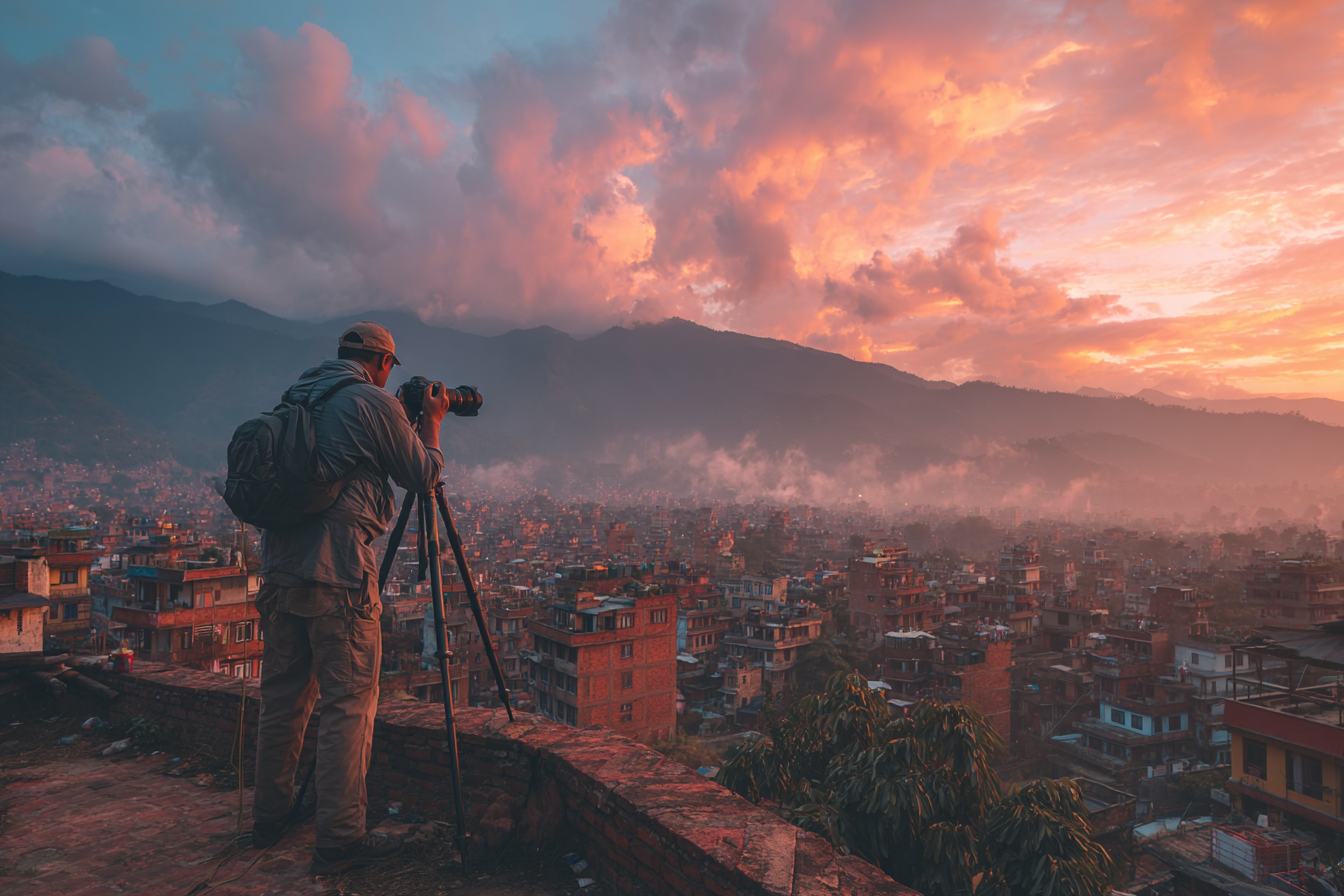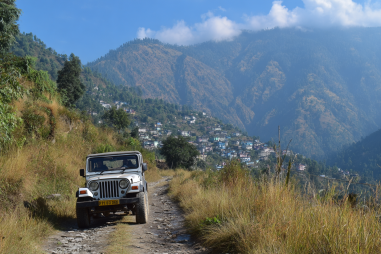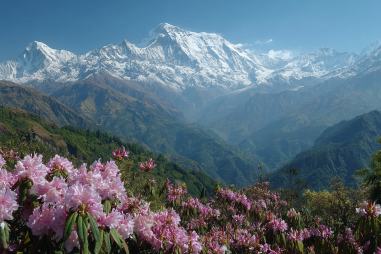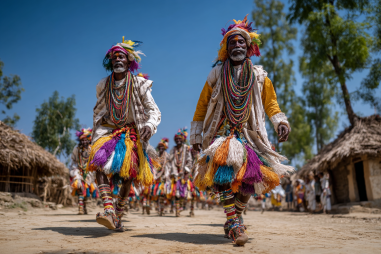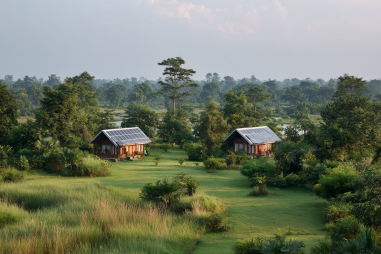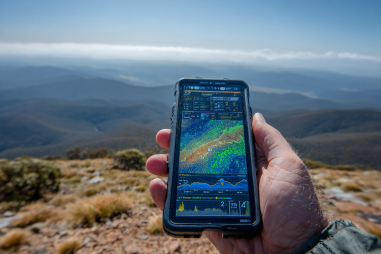Katmandu, the vibrant heart of Nepal, is a treasure trove for photographers. From ancient temples perched on hilltops to lively bazaars bustling with activity, the city offers endless inspiration. Whether you’re an amateur keen on capturing cultural snapshots or a seasoned photographer aiming for breathtaking landscapes, Kathmandu’s diverse scenes promise rich storytelling through your lens. Let’s dive into some of the city’s best photography spots that will help you capture its magic.
Top Scenic Viewpoints: Swayambhunath and Nagarkot
One of Kathmandu’s most iconic photo locations is Swayambhunath, often known as the Monkey Temple. This ancient stupa sits atop a hill and offers panoramic views of the sprawling city below. Early morning or late afternoon light bathes the golden spires in a warm glow, making it the perfect time for capturing intricate architectural details and the surrounding hillside. Photographers will also love the mix of colorful prayer flags fluttering in the breeze and the playful monkeys that add a lively element to your shots.
For nature and landscape photography enthusiasts, Nagarkot is a must-visit spot just a short drive from Kathmandu. Known for its sweeping views of the Himalayas, especially when the sun rises or sets, this hill station provides dramatic backdrops of snow-capped peaks against lush greenery. On a clear day, you can photograph the majestic Everest range, Annapurna, and Langtang mountains. Don’t forget your wide-angle lens to capture the expansive vistas.
Architectural Marvels and Durbar Squares
Kathmandu’s architecture tells stories that span centuries, reflecting a rich cultural heritage. The city’s trio of Durbar Squares — Kathmandu, Patan, and Bhaktapur — are UNESCO World Heritage sites offering some of the most stunning examples of Newari architecture. Elaborate wooden carvings, towering pagoda roofs, and ancient palaces provide endless details to frame and focus on.
At Kathmandu Durbar Square, the interplay of light and shadow among the temples and statues present dramatic photo opportunities. The bustling courtyards filled with locals and monks add authenticity. Patan Durbar Square, known for its artistic stone and wood craftsmanship, invites close-up shots of delicate windows and metalwork. Meanwhile, Bhaktapur’s squares are less crowded and give photographers a chance to capture quieter moments as well as grand festivals.
Markets and Street Life
For those who love candid street photography, Kathmandu’s markets are vibrant hubs of activity and color. The Asan Market, with its labyrinth of alleys, offers a sensory overload: stalls stacked with spices, fresh fruits, traditional handicrafts, and fragrant incense. The lively bargaining, smiling faces, and vivid displays make for compelling photo stories.
Beyond Asan, Thamel neighborhood is another hotspot, blending tourists with locals in a colorful tapestry of shops, cafes, and street vendors. Early mornings capture the city waking up, while evenings reveal neon-lit streets alive with chatter and music. Street portraits here can be especially evocative if you engage kindly and respect your subjects.
Festivals and Cultural Events as Photo Themes
Kathmandu is a city where traditions come alive through numerous festivals that offer unparalleled photography opportunities. Dashain and Tihar, two of Nepal’s biggest festivals, light up the city with vibrant decorations, ritual dances, and joyful crowds. Photographing these festivities captures the spirit of community and devotion.
During Indra Jatra, you’ll find masked dances and chariot processions unique to Kathmandu Valley. The intensity and emotion of these events create powerful images, but it’s important to approach with sensitivity and awareness of cultural norms. Documenting wedding ceremonies, temple rituals, or local musical performances can also enrich your photo narrative with intimate glimpses of Kathmandu’s cultural fabric.
Ethical Photography Tips
While Kathmandu’s beauty is irresistible to photographers, it’s essential to practice ethical photography to respect the people and places you visit. Always ask permission before photographing individuals, especially in private or sacred contexts. Use a polite approach and be prepared to accept a “no” graciously.
Respect religious sites by following posted rules and refraining from using flash or tripods where prohibited. Avoid intrusive photography that disrupts ceremonies or local life. Remember, your photos represent more than just images; they convey trust and respect between cultures.
Best Times for Natural Light
Capturing Kathmandu’s magic is greatly enhanced by good natural light. The golden hours—shortly after sunrise and just before sunset—are ideal for warm, soft light that adds depth and richness to photos. During these times, architectural details and landscapes acquire a gentle glow that enhances every shot.
Midday light, while harsh, can be used creatively for dramatic shadows, particularly around textured surfaces like temple walls or cobblestone streets. The monsoon season presents moody skies and reflective puddles that offer a different photographic mood, so don’t hesitate to explore different times and weather conditions to diversify your portfolio.
Recommended Camera Gear
Bringing the right gear to Kathmandu can make a significant difference in your photography experience. A versatile zoom lens (such as 24-70mm) covers a wide range of scenes, from sweeping landscapes to detailed architectural shots. A prime lens (like a 50mm or 35mm) is great for low-light conditions and street portraits.
A sturdy tripod is advisable if you plan to shoot in low light or want to take panoramic vistas at sunrise or sunset. Don’t forget extra batteries and memory cards, as power outlets may not be readily available during long days of shooting. For festival photography, a camera with a fast autofocus and good ISO performance will help you capture action in dimly lit temples and crowded streets.
Embark on a Photo Tour of Kathmandu
For photographers eager to immerse themselves fully, organized photo tours in Kathmandu provide valuable local insight and access to less-explored spots. Guided walks through ancient lanes, visits to artisan workshops, and trips to hilltop viewpoints combine the best of culture, nature, and history. These tours often include expert tips on composition, lighting, and ethical engagement with subjects, enhancing both your skill and experience.
Whatever your approach, Kathmandu’s rich tapestry of life and history offers boundless inspiration. Pack your camera, keep an open heart, and prepare to capture moments that tell the timeless story of this magical city.

